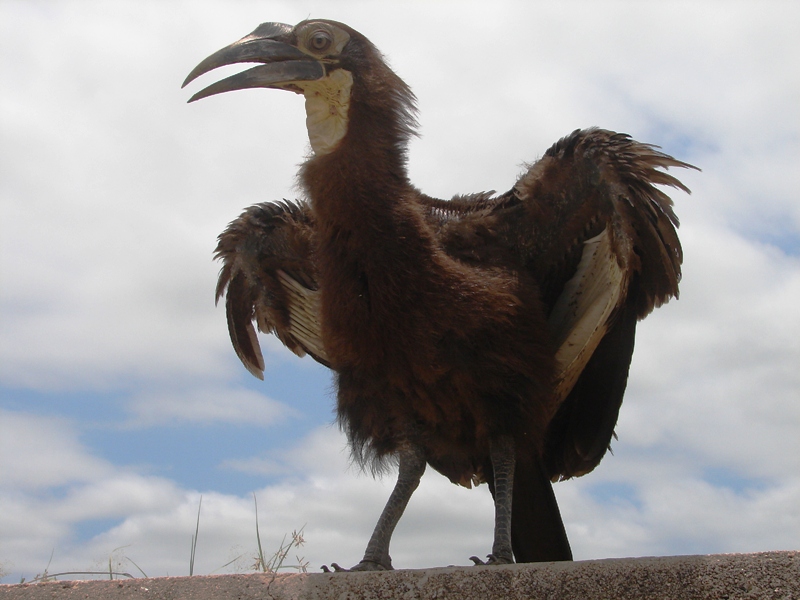Page 10 of 12
Re: Truly African Birds Found in South Africa
Posted: Thu Dec 10, 2020 2:33 pm
by Klipspringer
nan wrote: ↑Thu Dec 10, 2020 1:41 pm
Klipspringer wrote: ↑Thu Dec 10, 2020 11:44 am
nan wrote: ↑Mon Dec 07, 2020 11:14 pm
a cavity like that

Green Wood-Hoopoe

nan, what do you think? Do we have an incubating female on her nest site here?
Yes Klipspringer I think you are right, because I observed this bird for a long time, without trying to approche to not disturb, it was so fascinating for me

nan, have you only seen one bird there?
Re: Truly African Birds Found in South Africa
Posted: Fri Dec 11, 2020 12:52 am
by nan

I have several pictures, it was long time ago, will have a look at my diary and try to reply to your question Klipspringer

but like I'm not at home (because of the renovations) I have to search in the boxes, all is in boxes

still for more than a month
Need one or two days to find it... maybe

thank you
Re: Truly African Birds Found in South Africa
Posted: Fri Dec 11, 2020 1:01 am
by nan
Lisbeth wrote: ↑Thu Dec 10, 2020 1:48 pm
Nan's photos clearly show how a photo can lie; in the second the trunk looks much bigger, but not the bird

it's from another angle.... the light brown trunk behind the second pic is the same like in the first but side by side
I know my English is deplorable

... but in one word : is the same trunk

Re: Truly African Birds Found in South Africa
Posted: Fri Dec 11, 2020 10:36 am
by Richprins

nana!
Re: Truly African Birds Found in South Africa
Posted: Fri Dec 11, 2020 1:41 pm
by Klipspringer
The Common Scimitarbill
Rhinopomastus cyanomelas is a specialised feeder. Equipped with a long beak, powerful, gripping feet and long tail (used for balance and bracing itself), it is proficiently adapted for its arboreal lifestyle. There are few parts of a tree that it cannot access and its decurved bill allows it to probe deep under bark and into cavities and flowers. Its diet comprises primarily invertebrates such as termites, ants, wasps, flies, mantids, beetles and spiders, as well as their eggs, larvae (including caterpillars) and pupae.
They roost and breed in cavities and have the same stinky defence tactic as their woodhoopoe cousins. But they are not social, just breeding in pairs without helpers.
![Photo [O]](./images/smilies/camera.gif)
please! The Kalahari nerds should have some photos for us.
Re: Truly African Birds Found in South Africa
Posted: Fri Dec 11, 2020 3:44 pm
by Lisbeth
I am not a Kalahari nerd so only have a very bad one

Re: Truly African Birds Found in South Africa
Posted: Fri Dec 11, 2020 3:48 pm
by Klipspringer
They do look black in the field.
Re: Truly African Birds Found in South Africa
Posted: Fri Dec 11, 2020 6:32 pm
by Richprins
Never seen one!

Re: Truly African Birds Found in South Africa
Posted: Tue Dec 15, 2020 1:57 pm
by Klipspringer
Bucorvidae
The Southern Ground-Hornbill Bucorvus leadbeateri is one of two species in the family Bucorvidae - the other being the Northern Ground-Hornbill B. abyissincus. The Bucorvidae are most notably separated from true hornbills (Bucerotidae) by not sealing the female into the nest cavity while breeding.
The Northern Ground-Hornbill inhabits drier steppe habitats north of the equator, while the Southern Ground-Hornbill occurs from the equator south, in savannah and grassland habitat, to the southern extremity of its range in the Eastern Cape Province of South Africa.
In South Africa, they occur most commonly in Limpopo, Mpumalanga, KwaZulu-Natal and the Eastern Cape Province. The highest recorded density is at Mana Pools, Zimbabwe (one group every 20 km2), while in South Africa, densities are much lower (one group per 100 km2).
They are the largest co-operatively breeding bird in the world, living in social groups of 2-12 members (mostly 3-5 members). Groups consist of an alpha breeding pair assisted by ≤5 adult males and ≤4 immature individuals of either sex. Non-breeding group members are generally retained offspring of the dominant pair. These individuals are subordinate helpers who contribute to group activities, including food provisioning to the
incubating alpha female and growing chick.
Southern Ground-Hornbills occupy year-round home ranges, which they actively defend. Territory defence is undertaken by adult group members and consists of regular pre-dawn vocalisations while still at the roost site and high aerial pursuits if groups hear or encounter rival neighbours. Their deep booming call, which is audible to humans at distances of up to 5 km, is most often a duet initiated by the alpha breeding pair, with the male calling at a lower pitch than the female.
Re: Truly African Birds Found in South Africa
Posted: Tue Dec 15, 2020 6:00 pm
by Richprins
My favourite pic, by Destroyer at Biyamiti Weir!


